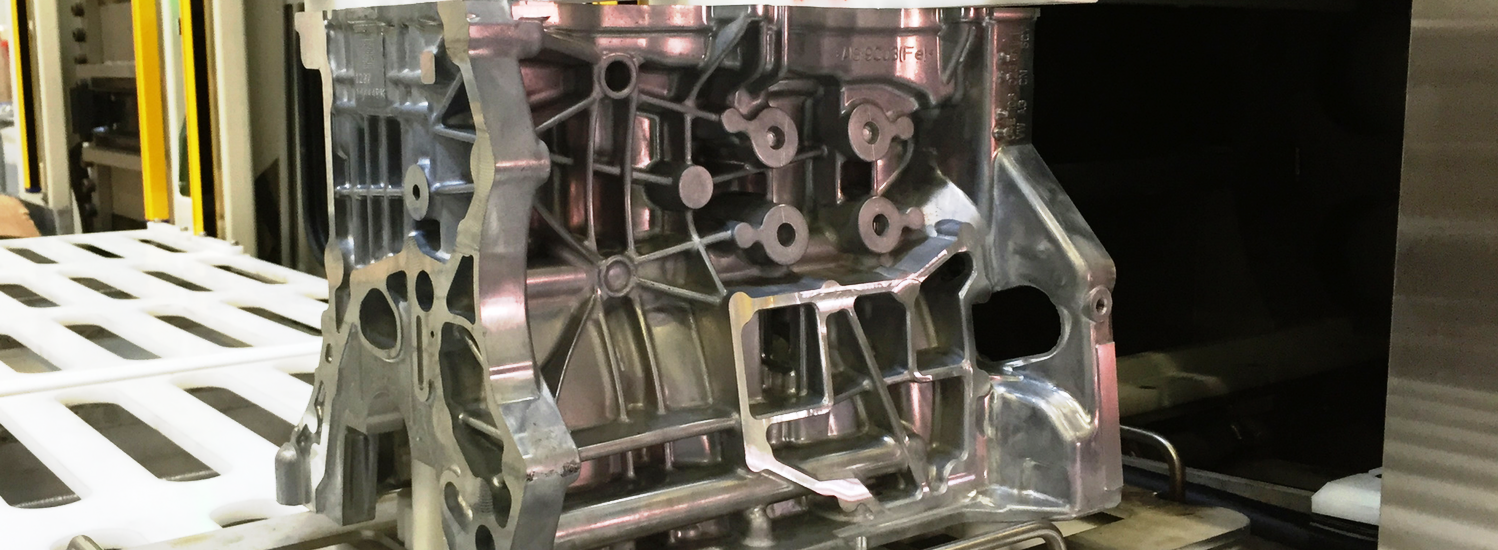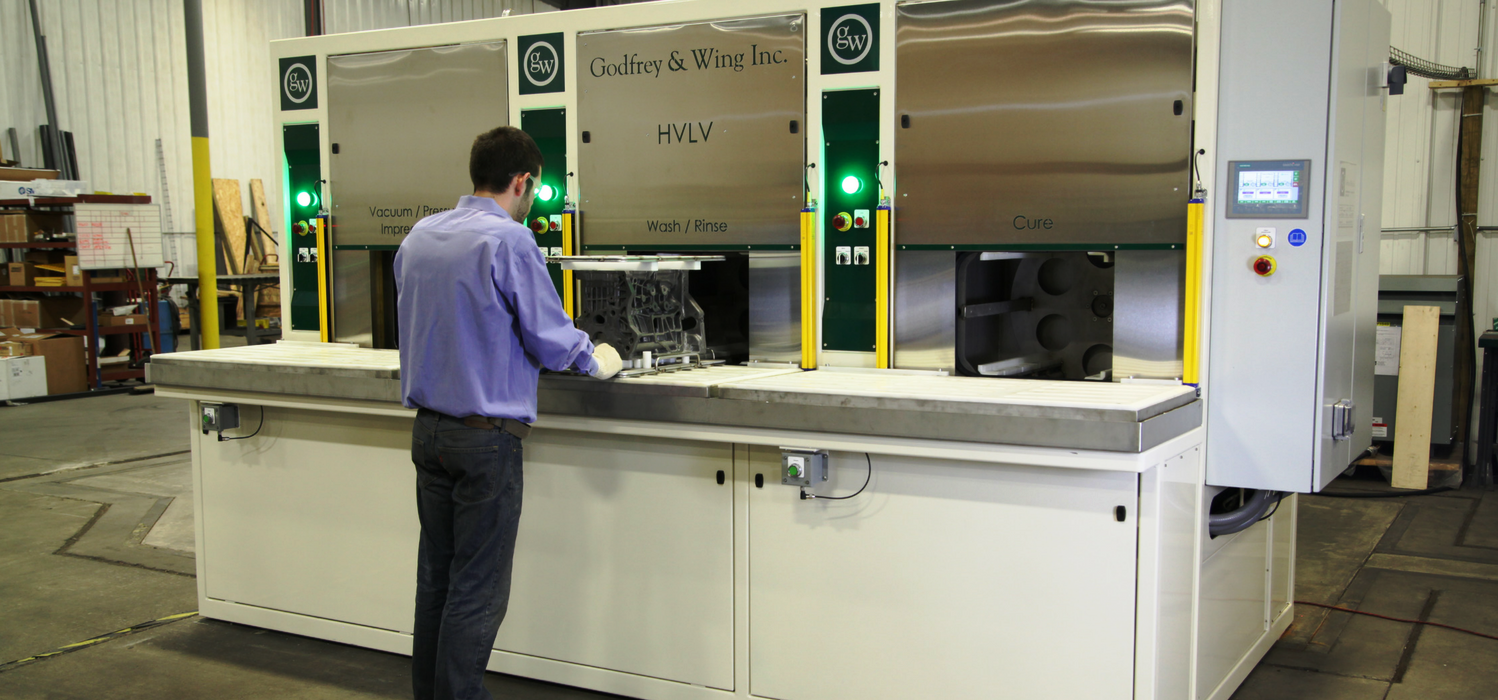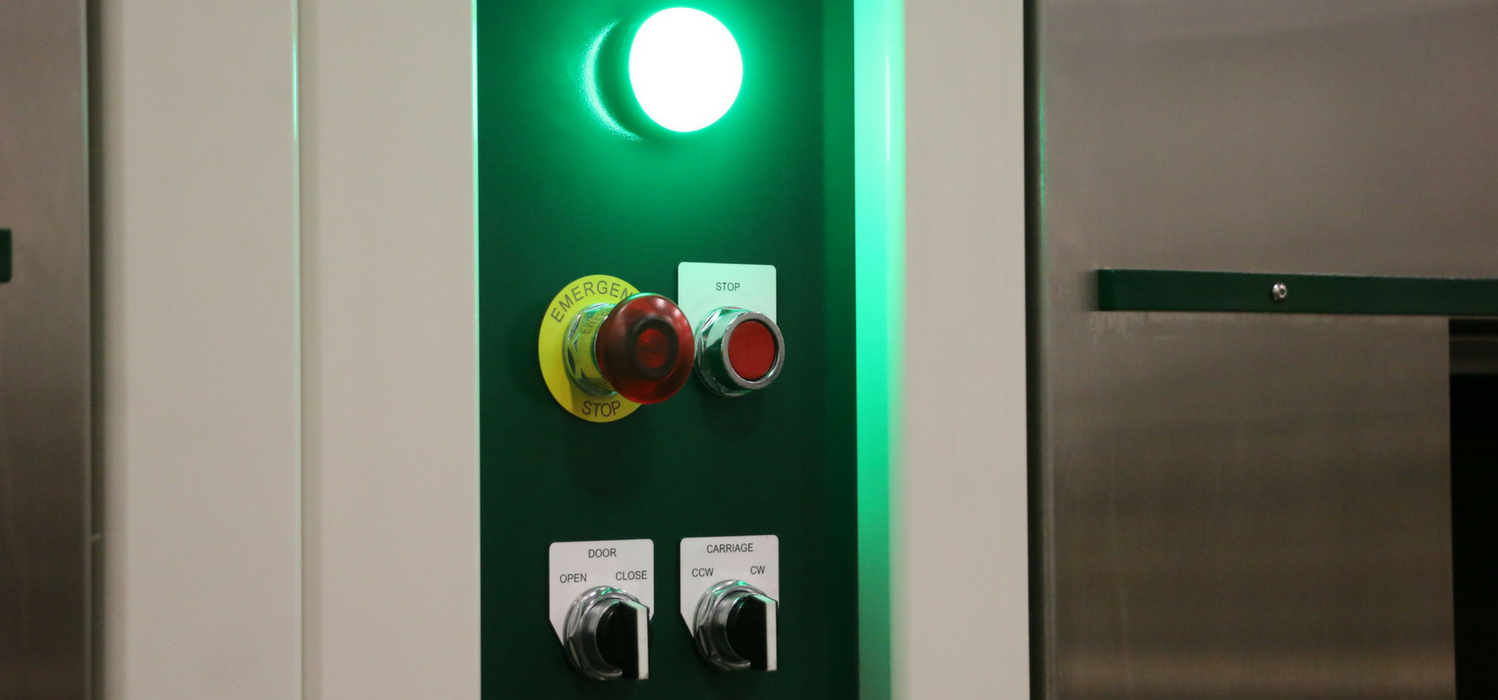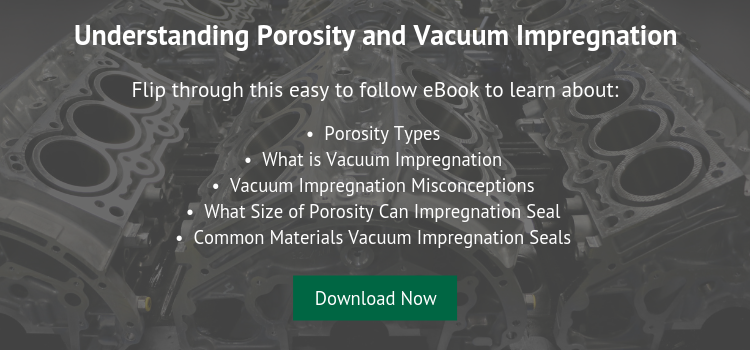A global automotive part manufacturing company produces aluminum engine blocks, cylinder heads, and transmission cases. The company is a Tier 1 supplier to automotive OEMs, and has facilities through the world. As such it was actively looking for opportunities to increase its efficiency and output.

The Challenge
This company received a contract for a new large scale, engine block program from an OEM at one of its European facilities. The program’s quality standards forced the need for vacuum impregnation to seal the casting porosity. If the porosity is not sealed, then automotive fluids will leak from the part, causing a field return.
Previously the customer outsourced any impregnation projects to an outside vendor. Due to this country’s poor logistics and limited number of vacuum impregnation vendors, this approach was not feasible with this new program. These factors translated into three specific challenges for the customer:
- High Freight Costs– The freight costs associated with moving these parts to and from the outside source would be high.
- Increased Handling Damage–Previous impregnation vendors utilized a batch impregnation system. This style of system has a history of damaging machined features.
- Work in Process (WIP)–The transit time between the company and the impregnation vendor would cause the company to miss shipments to the OEM.
The company realized that it had to implement an impregnation strategy that would address these three challenges to reduce waste in the supply chain.
The Solution
Godfrey & Wing determined that the implementation of in-house vacuum impregnation technology would alleviate these challenges. The company proposed its High Value Low Volume (HVLV) single piece flow impregnation system for installation at the customer’s facility.
The HVLV uses the Dry Vacuum and Pressure (DVP) process, and Godfrey & Wing’s 95-1000AA recoverable sealant. The DVP process pushes the sealant deep into the micro porosity in order to improve sealing effectiveness. The 95-1000AA recoverable sealant is easy to use and remains stable and pure.

The proposed HVLV solution outlines multiple benefits to the customer:
- The system is a viable in-house solution that can easily be installed into the customer’s facility without any infrastructure changes.
- The single piece flow eliminates excessive handling, and handling damage.
- With a small footprint of 96 square feet, the HVLV system would integrate with other operations achieving continuous part flow. This allows the customer to meet production demands and eliminate WIP.
Having never qualified the HVLV, the customer ran samples at Godfrey & Wing’s technology center, located in Untergruppenbach Germany. The results clearly showed the HVLV’s DVP process created superior sealing results:
- 0% part damage
- 100% part recovery
- 0% part contamination
The customer also found the system simple and safe to use. The part fixtures and platform allows the operator to easily move a part from station to station. Each station starts with a push of a single button. The man-machine interface keeps the operator safe at all times. Light curtains, insulated panels, and ventless exhaust ensure ongoing operator safety.

The Results
The customer purchased two HVLVs. One HVLV is stationed at the customer’s foundry to seal parts after pre-machining (also known as hyper cubing), and the other system is stationed at the OEM to seal any parts that may leak after final machining.
The two facilities are 500 miles apart so the two in-house systems eliminate any production disruptions. After pre-machining, fix-on-fail parts are impregnated at the foundry. When the parts arrive at the OEM for final machining and assembly, only a reduced amount of material is removed. Since the impregnation at pre-machining has already sealed porosity, the opportunity to open an interconnected leak path is reduced. Any parts that don’t conform to standards after machining can be easily impregnated without disrupting production.
The HVLVs are making a significant impact by answering the following challenges:
- Reduce Freight Costs–The modular design allows the company to integrate the HVLVs directly into production, and eliminate outsourcing.
- Remove Handling Damage–The single piece flow eliminates the chance of damaging critical features.
- Eliminate WIP–The parts continuously flow from each in-house operation, enabling the customer to meet production demand.
In Summary
Godfrey & Wing’s HVLV proved that vacuum impregnation is a viable, in-house solution for producing pressure tight components. Throughout the supply chain, the HVLV is the perfect solution to eliminate production delays caused by logistics.




